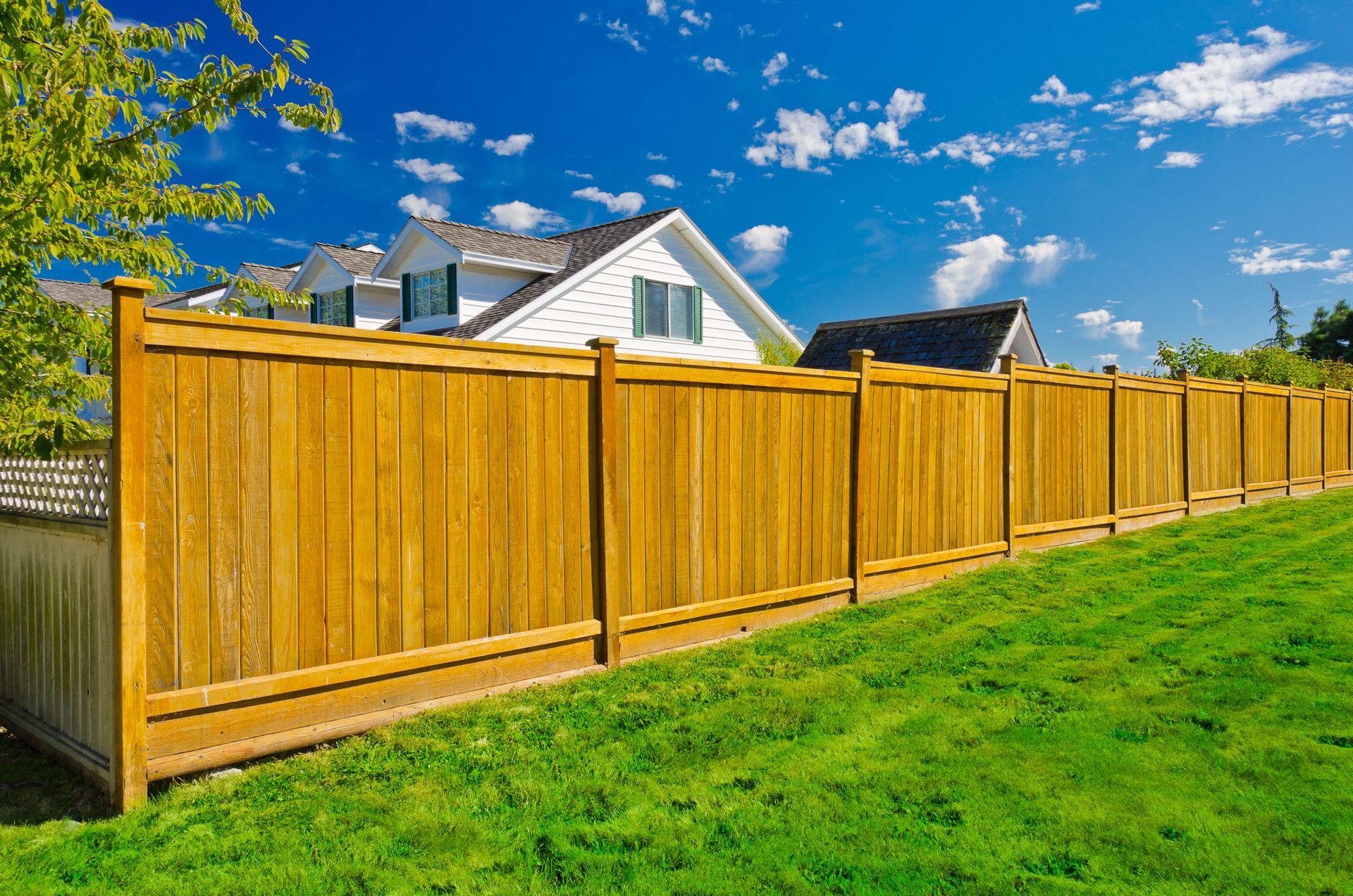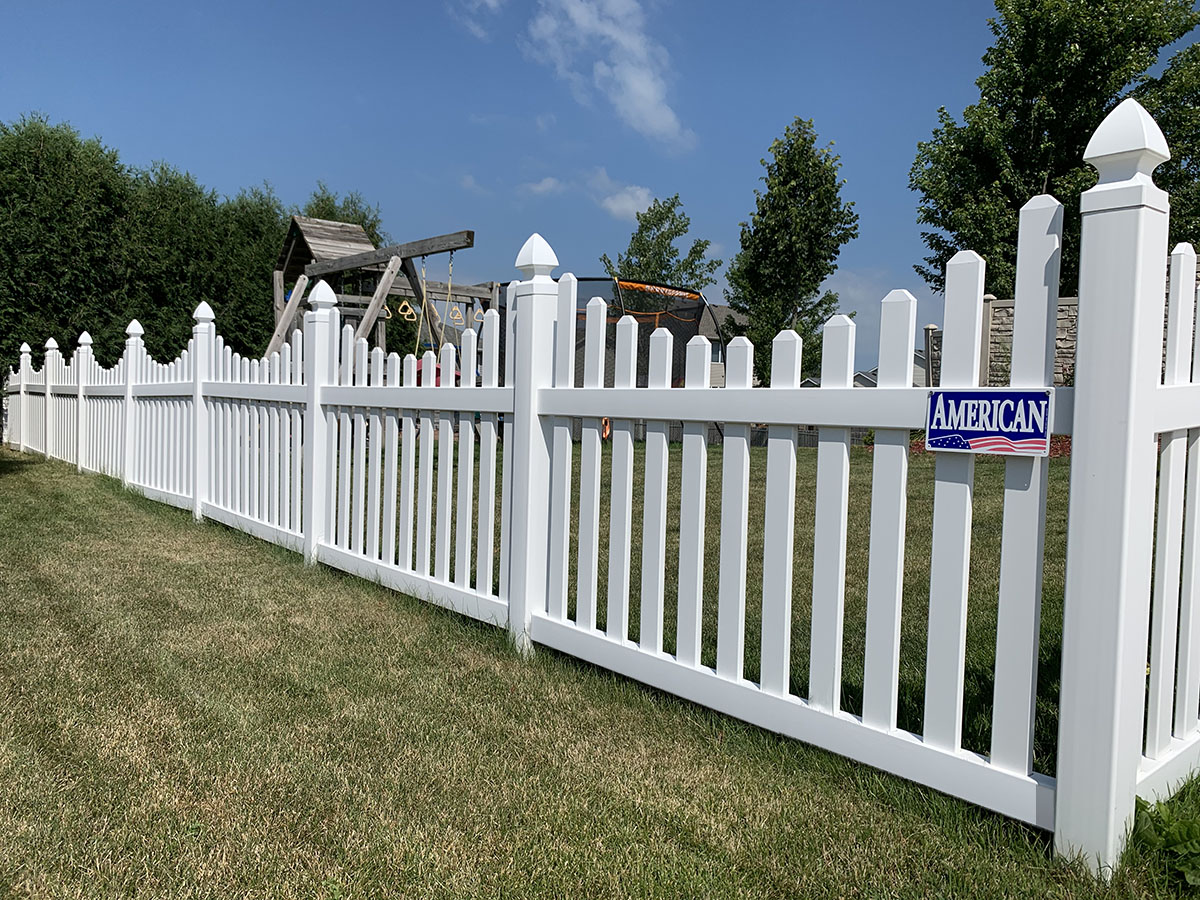All Categories
Featured
Your fencing is an investment that gives privacy, safety, and curb allure. Each secure fencing type has special maintenance needs based on its material's sturdiness, exposure to the aspects, and various other factors.
![]()
Weather Defense: Apply a top quality sealer or stain every 2-- 3 years to shield the wood from dampness and UV rays. For extreme environments, annual reapplication may be required. Cleaning: Utilize a yard hose or a stress washer on a low setup to remove dust and mold. Follow up with a light detergent for persistent spots. Repairs: Inspect for loosened or decaying boards and replace them promptly. Tighten screws or nails to keep the structure stable. Insect Control: Use termite-resistant timber or deal with the fence with pest repellents to stay clear of invasions. 2. Vinyl Fences. Plastic fences are prominent for their resilience and very little maintenance needs.
Cleansing: Wash the surface area with a yard pipe or a combination of soap and water to get rid of dirt and algae. For hard discolorations, utilize a vinyl-specific cleaner or a soft-bristle brush. Assessments: Regularly inspect for fractures or bending, especially after solid winds or hefty influences. Fixings: Change any type of broken sections right away. Plastic fences commonly make use of modular components, making fixings simple. 3. Chain-Link Fences. Chain-link fences are economical and sturdy yet call for regular focus to stop rust.
Corrosion Elimination: Use a wire brush to remove rust from revealed areas, after that use a rust-inhibiting spray to secure the metal. Cleaning: Hose down the fence consistently to eliminate dirt. For grime, usage soapy water and a stiff-bristle brush. Fixings: Tighten any type of sagging sections or replace harmed web links to maintain safety and security. 4. Wrought Iron Fencings. Wrought iron fencings offer durability and style however are vulnerable to rust if not appropriately maintained.
![]()
Rust Prevention: Scuff off rust places with sandpaper and use a rust-resistant primer complied with by exterior steel paint. Evaluate for rust a minimum of twice a year. Cleansing: Wipe down with a towel and soapy water to preserve the coating. Avoid rough cleaners that can damage the surface area. Painting: Repaint every couple of years to secure the metal from rust and keep it looking fresh. 5. Light weight aluminum Fences. Aluminum fences are lightweight, sturdy, and immune to corrosion, calling for much less maintenance compared to wrought iron.
Cleaning: Tidy with soap and water to remove dust and dust. Wash completely to stop residue. Examinations: Look for loosened hardware or damages, especially after storms. Safeguard or replace parts as required. Touch-Ups: Use paint to scratched or broken areas to avoid damage to the safety finish. 6. Composite Fences. Composite fencings are made from a blend of timber and plastic, combining longevity with marginal maintenance.
![]()
Cleaning: Utilize a hose or a soft brush with soap and water to clean the surface area. Avoid making use of rough chemicals. Inspections: Seek bending, specifically in extreme warmth. Tighten or change any type of broken panels. Mold Avoidance: While composite products resist rot, keep the fencing clean and dry to prevent mold buildup. 7. Bamboo Fences. Bamboo is an environmentally friendly choice but calls for cautious upkeep to keep its look and durability.
Securing: Apply a safety sealant or varnish every 2-- 3 years to defend against dampness and UV damage. Cleansing: Tidy with light soap and a soft sponge or brush. Prevent high-pressure washing, which can harm bamboo fibers. Repair services: Replace harmed posts or areas to keep structural honesty and appearance. General Upkeep Tips for All Fencing Types. Regular Examinations: Examine your fencing at the very least once every period for damages, wear, or loosened parts. Cutting Plant Life: Maintain creeping plants, plants, and shrubs away from the fencing to stop dampness damages and minimize parasite task. Seasonal Adjustments: In areas with snow, stay clear of piling snow against your fence to avoid structural stress and anxiety. In hot environments, evaluate for heat-related bending or fading. Final thought. Each secure fencing material has its unique maintenance requirements, yet an aggressive technique to care can extend its life expectancy and keep it looking its ideal. Wooden fences require even more interest contrasted to vinyl or light weight aluminum, yet each material advantages from routine cleansing, examinations, and timely fixings. By customizing your maintenance methods to the kind of fence you own, you'll make certain that it remains to offer privacy, safety and security, and curb charm for years to come.

- Wooden Fencings. Wooden fences are valued for their all-natural appearance yet require regular upkeep to stop damage.
Weather Defense: Apply a top quality sealer or stain every 2-- 3 years to shield the wood from dampness and UV rays. For extreme environments, annual reapplication may be required. Cleaning: Utilize a yard hose or a stress washer on a low setup to remove dust and mold. Follow up with a light detergent for persistent spots. Repairs: Inspect for loosened or decaying boards and replace them promptly. Tighten screws or nails to keep the structure stable. Insect Control: Use termite-resistant timber or deal with the fence with pest repellents to stay clear of invasions. 2. Vinyl Fences. Plastic fences are prominent for their resilience and very little maintenance needs.
Cleansing: Wash the surface area with a yard pipe or a combination of soap and water to get rid of dirt and algae. For hard discolorations, utilize a vinyl-specific cleaner or a soft-bristle brush. Assessments: Regularly inspect for fractures or bending, especially after solid winds or hefty influences. Fixings: Change any type of broken sections right away. Plastic fences commonly make use of modular components, making fixings simple. 3. Chain-Link Fences. Chain-link fences are economical and sturdy yet call for regular focus to stop rust.
Corrosion Elimination: Use a wire brush to remove rust from revealed areas, after that use a rust-inhibiting spray to secure the metal. Cleaning: Hose down the fence consistently to eliminate dirt. For grime, usage soapy water and a stiff-bristle brush. Fixings: Tighten any type of sagging sections or replace harmed web links to maintain safety and security. 4. Wrought Iron Fencings. Wrought iron fencings offer durability and style however are vulnerable to rust if not appropriately maintained.

Rust Prevention: Scuff off rust places with sandpaper and use a rust-resistant primer complied with by exterior steel paint. Evaluate for rust a minimum of twice a year. Cleansing: Wipe down with a towel and soapy water to preserve the coating. Avoid rough cleaners that can damage the surface area. Painting: Repaint every couple of years to secure the metal from rust and keep it looking fresh. 5. Light weight aluminum Fences. Aluminum fences are lightweight, sturdy, and immune to corrosion, calling for much less maintenance compared to wrought iron.
Cleaning: Tidy with soap and water to remove dust and dust. Wash completely to stop residue. Examinations: Look for loosened hardware or damages, especially after storms. Safeguard or replace parts as required. Touch-Ups: Use paint to scratched or broken areas to avoid damage to the safety finish. 6. Composite Fences. Composite fencings are made from a blend of timber and plastic, combining longevity with marginal maintenance.

Cleaning: Utilize a hose or a soft brush with soap and water to clean the surface area. Avoid making use of rough chemicals. Inspections: Seek bending, specifically in extreme warmth. Tighten or change any type of broken panels. Mold Avoidance: While composite products resist rot, keep the fencing clean and dry to prevent mold buildup. 7. Bamboo Fences. Bamboo is an environmentally friendly choice but calls for cautious upkeep to keep its look and durability.
Securing: Apply a safety sealant or varnish every 2-- 3 years to defend against dampness and UV damage. Cleansing: Tidy with light soap and a soft sponge or brush. Prevent high-pressure washing, which can harm bamboo fibers. Repair services: Replace harmed posts or areas to keep structural honesty and appearance. General Upkeep Tips for All Fencing Types. Regular Examinations: Examine your fencing at the very least once every period for damages, wear, or loosened parts. Cutting Plant Life: Maintain creeping plants, plants, and shrubs away from the fencing to stop dampness damages and minimize parasite task. Seasonal Adjustments: In areas with snow, stay clear of piling snow against your fence to avoid structural stress and anxiety. In hot environments, evaluate for heat-related bending or fading. Final thought. Each secure fencing material has its unique maintenance requirements, yet an aggressive technique to care can extend its life expectancy and keep it looking its ideal. Wooden fences require even more interest contrasted to vinyl or light weight aluminum, yet each material advantages from routine cleansing, examinations, and timely fixings. By customizing your maintenance methods to the kind of fence you own, you'll make certain that it remains to offer privacy, safety and security, and curb charm for years to come.
Latest Posts
Explore Brake Repair & More: Full Repair Options from Montclare Auto Repair
Published May 23, 25
1 min read
Signs When Your Car Needs Expert Vehicle Service at Montclare Auto Repair
Published May 22, 25
1 min read
Discover the Top Auto Repair Offers in Montclare, Chicago
Published May 21, 25
1 min read
More
Latest Posts
Explore Brake Repair & More: Full Repair Options from Montclare Auto Repair
Published May 23, 25
1 min read
Signs When Your Car Needs Expert Vehicle Service at Montclare Auto Repair
Published May 22, 25
1 min read
Discover the Top Auto Repair Offers in Montclare, Chicago
Published May 21, 25
1 min read